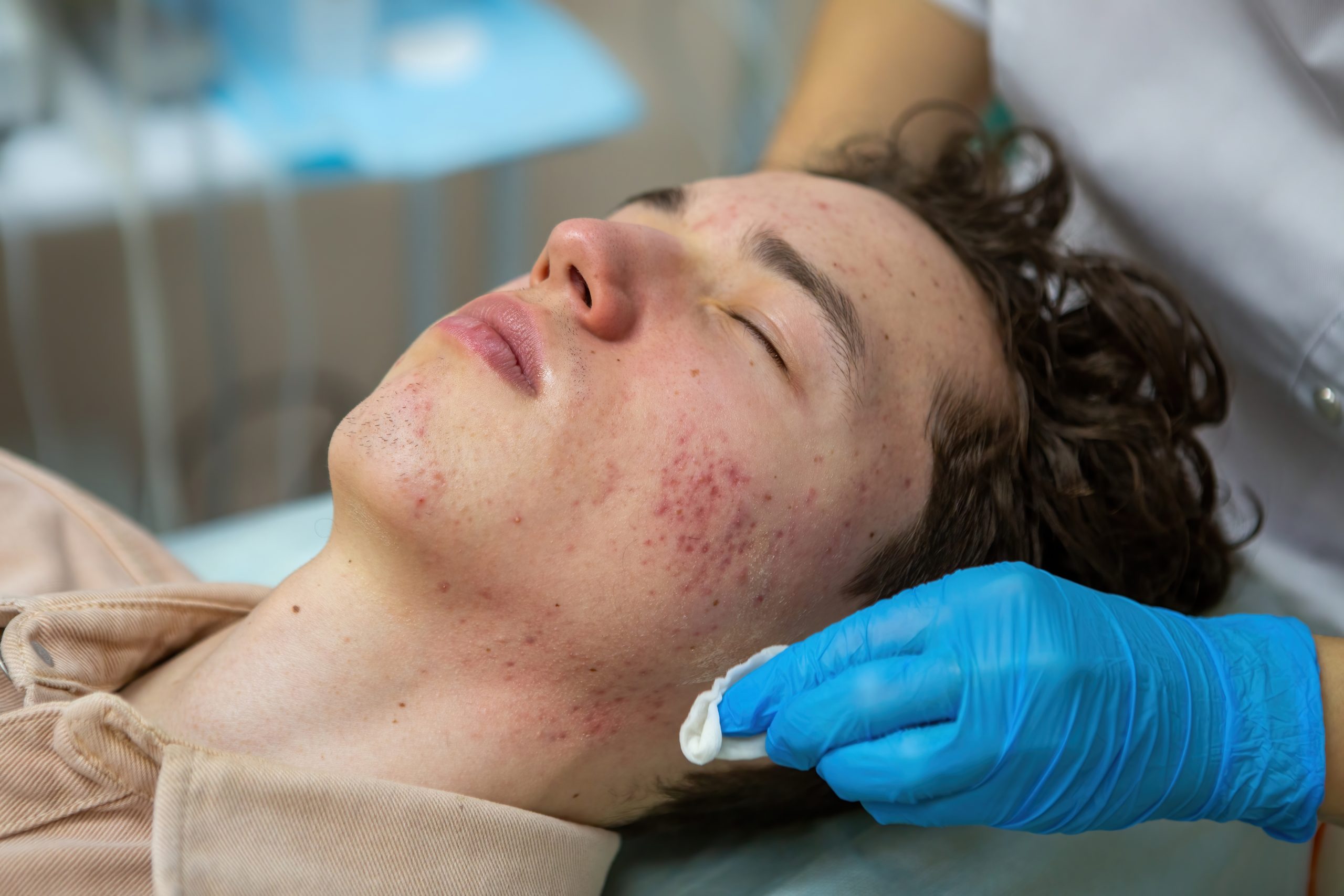3 Main Types of Acne Scars and how to Treat them all
Everyone experiences acne from time to time, and acne causes scarring as it patches. Acne scars vary in appearance depending upon the sort and depths of the acne.
This article examines the types of acne scars and how to manage them.
Your decisions depend upon the types of acne scars you have, but many individuals have more than one sort and may benefit from a mix of acne scar prescriptions.
What is an Acne Scar?
Acne is a skin issue seen among 11-to 30-year-olds. A scar is an engraving passed on the skin due to the formation of fibrous tissue during the well-known repairing. New collagen fiber fix full-thickness skin hurts.
Acne scars can be hard to treat and need capable help if you want to see veritable improvement.
Over-the-counter things aren’t areas of strength for satisfactorily working on the look and surface of your skin, but some procedures do.
Also See:
Pregnancy Safe Skincare | Everything you need to know
Main Types of acne scars
Types of acne scars fall into two head arrangements.
The first is atrophic scars achieved by a lack of tissue, with three types known as an ice pick, boxcar, and rolling.
The second type is Post-provocative hyperpigmentation. It is due to overflow concealed from the skin’s extra melanin during recovery.
The third type is hypertrophic and keloid scars due to overflow tissue.
Also See:
About Inverse psoriasis with causes and treatment decisions
Atrophic scars
Atrophic scars appear as a deterred district on a singular’s skin.
When the skin can’t fix tissue properly, it forms an atrophic scar.
Atrophic scars are due to collagen degradation in light of conditions, similar to acne or chickenpox. Operations and innate illnesses can all achieve acne scars.
Atrophic scars are divided into the going with three subtypes:
#1) Ice Pick Scars
Ice pick scars are significant, incredibly restricted scars that loosen up into the dermis.
The skin looks penetrated by an ice pick or sharp instrument.
Ice pick scars seem to make slight, significant openings into the skin. Some could appear to be a tremendous, open pore.
How They Develop
Ice pick scars cultivate after sickness and bothering from development or defect works its heading to the surface. Skin tissue is decimated. It leaves a long, segment-like acne scar.
Treating Ice Pick Scars
You have several options for treating ice pick scars. Punch extraction is a regular ice pick scar treatment. During the methodology, your primary care physician takes a bit of a pattern-like gadget to eliminate the scar. The skin is then adhered back together to retouch.
Punch grafting is for more significant ice pick scars. Experts remove the scarred tissue from the skin. They then stack up the opening with a joint of skin, ordinarily taken from behind the ear.
Both procedures can leave little scars.
The ensuing scars are endlessly level with the incorporating skin.
It makes them essentially less distinguishable.
#2) Boxcar scar
Boxcar scars are greater than ice pick scars and record 20 to 30 percent of every atrophic scar.
These scars are round to oval depressions with solidly portrayed outlines that are 1.5 to 4.0 mm far-reaching.
They are a significant part of the time space in the skin and can seem like a chickenpox scar.
How They Develop
Exactly when a searing breakout destroys collagen, the tissue is lost. The skin over this area is left without assistance, making a put locale down. Cargo vehicle scars can be shallow to severe.
It depends upon how much tissue is lost.
Treating Boxcar Scars
Experts can treat boxcar scars with punch extraction. These types of scars can be treated with punch elevation.
It’s essentially equivalent to punch grafting together.
The skin at the groundwork of the scar is from a night out off the surface.
The most notable treatment for vehicle scars is a dermal filler.
Direct procedures stood out from various types of acne scar medications.
#3) Rolling scar
Rolling scars are the broadest atrophic scars and may require clear cutoff points.
They generally have variable profundities, edges, and a more unbalanced appearance.
Rolling scars address 15 to 25 percent of atrophic scars.
These are the scars, contrasting 5 mm in width.
How They Develop
Moving scars arise when tacky gatherings of tissue cultivate between the skin and the subcutaneous tissues. These gatherings pull the epidermis, limiting it to plans of the skin.
Treating Rolling Scars
Subcision is one technique used to treat rolling scars. This simple medical procedure was under neighboring sedation for a transient reason. A dermatologist will implant a needle agreed with the skin, cutting the wiry base of the scar and pulling down on the skin from underneath.
Post-provocative hyperpigmentation
Acne could have been feeling significantly better, but the bothering could make an engraving.
This engraving is overflow concealed from the skin’s improvement of extra melanin during recovery.
Hyperpigmentation is one of three types of acne scars that can impact everyone. It is more in those who have more melanin in their skin.
These hazier spots of skin could obscure with time and legitimate sun security.
How It Develops
Post-searing hyperpigmentation makes when a physical issue, rash, pimple, or other injury causes skin disturbance. As the skin recovers, it conveys a great deal of melanin, the substance that gives skin its tone.
Treating Post-Inflammatory Hyperpigmentation
Treatment isn’t needed because staining often vanishes in the long term.
If you essentially want to help with speeding up obscuring, there are several decisions for you.
Over-the-counter things having alpha-hydroxy acids can help with obscuring minor to coordinate staining.
Cure skin retinoid or azelaic destructive creams are incredible decisions for more serious post-red hot hyperpigmentation.
Hypertrophic and Keloid Scars
Hypertrophic scars are those types of acne scars that are firm, raised acne scars.
They foster over the external layer of the skin. Hypertrophic scars achieved by acne are in the center, especially in men, but they can happen wherever on the body. Hypertrophic scars are more typical after a significant injury or trauma.
Related: How to get Rid of Acne Scars Medically or at Home?
Keloids are a more outrageous sort of raised scar.
They differ from hypertrophic scars keloids become larger than the primary injury. They can convey raised, sidelong shoots that expand much farther than the injury and can continue to turn out to be long after the principal injury. Certain people are more disposed to making keloids.
How They Develop
Not in any way form like an ice pick and cargo boxcar scars, hypertrophic scars are not due to a lack of tissue. They make because of an overproduction of collagen. The skin doesn’t understand that the injury has recovered and continues to convey collagen.
Treating Hypertrophic Scars and Keloids
There are a great many decisions for treating hypertrophic and keloid scars.7 The best treatment for you will depend upon your situation, yet include:
- Steroid (cortisone) creams
- Silicone gels
- Cryotherapy
- Tapes
- Beat a variety of laser medications
- Implantations to help agreement and smooth the scar
You take care while treating these scars to make an effort not to bother the skin, which can incite a disintegrating of the keloid.
When to see a dermatologist?

For by far most with acne, staining will obscure with acne treatment and sun protection. When you have scarring or staining that perseveres north of a year, talk with your dermatologist.
Your dermatologist can give you a treatment plan best for your skin. Home medications can moreover help with decreasing the presence of acne scars.
They are ordinarily not particularly effective as prescriptions introduced by your dermatologist.
Final words
For by far most, acne is an inescapable truth, yet a horrible one. More than 90% of people across the globe will experience acne in their life.
Overseeing acne or acne scars can feel binding. There are various medications available for every types of acne scars, things being what they are.
The best approach to finding the treatment is to start with the examination. Expecting that you’re stressed over acne scars, see your dermatologist cultivate a treatment plan that is great for you.

